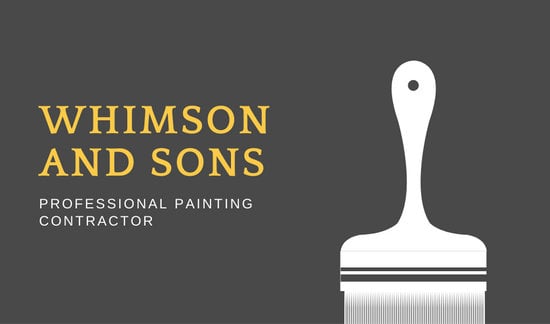Comprehending Seasonal Influences On Commercial Outside Paint: Important Expertise For Success
Comprehending Seasonal Influences On Commercial Outside Paint: Important Expertise For Success
Blog Article
Web Content Writer-Korsholm Chaney
When you're intending an industrial exterior paint task, seasonal variables can make or break your results. You'll want to take into consideration exactly how temperature level and humidity influence paint application and drying times. Picking the appropriate season can guarantee your paint adheres appropriately and lasts much longer. But which web link are really the most effective for this type of job? Let's explore the key elements that can impact your task's success.
The Influence of Temperature Level on Paint Application
When you're planning a commercial exterior painting task, the temperature can dramatically impact just how well the paint sticks and dries out.
Ideally, you intend to paint when temperature levels vary in between 50 ° F and 85 ° F. If stright line 's as well chilly, the paint may not cure properly, leading to problems like peeling or breaking.
On the other hand, if it's as well warm, the paint can dry out too quickly, stopping proper adhesion and resulting in an irregular coating.
You should likewise consider the time of day; early morning or late afternoon supplies cooler temperatures, which can be much more positive.
Always check the producer's suggestions for the details paint you're making use of, as they frequently give assistance on the suitable temperature level variety for optimum results.
Humidity and Its Impact on Drying Times
Temperature isn't the only environmental variable that affects your business external painting task; moisture plays a significant role too. High humidity levels can reduce drying times drastically, impacting the total quality of your paint job.
When the air is filled with dampness, the paint takes longer to cure, which can lead to issues like bad bond and a higher risk of mildew growth. If https://www.bobvila.com/articles/paint-colors-that-make-a-house-appear-dingy/ on a specifically humid day, be prepared for prolonged wait times in between layers.
It's critical to keep track of neighborhood weather conditions and strategy accordingly. Preferably, aim for moisture levels in between 40% and 70% for optimal drying.
Keeping these factors in mind guarantees your job remains on track and delivers an enduring surface.
Best Seasons for Commercial Exterior Painting Projects
What's the very best time of year for your commercial exterior paint tasks?
Springtime and very early fall are usually your best bets. Throughout these seasons, temperature levels are moderate, and humidity levels are commonly lower, developing suitable problems for paint application and drying out.
Prevent summer season's intense heat, which can trigger paint to completely dry also swiftly, leading to poor bond and surface. Similarly, winter months's chilly temperatures can hinder appropriate drying out and curing, running the risk of the longevity of your paint work.
Go for days with temperatures between 50 ° F and 85 ° F for optimum outcomes. Keep in mind to examine the local weather report for rainfall, as damp conditions can wreck your project.
Preparation around these variables ensures your paint task runs efficiently and lasts much longer.
Conclusion
To conclude, preparing your commercial exterior painting tasks around seasonal considerations can make a significant difference in the outcome. By scheduling work during the ideal temperature levels and moisture degrees, you'll guarantee far better bond and drying out times. Remember to watch on neighborhood weather forecasts and choose the right time of year-- spring and early fall are your best bets. Taking these steps will aid you achieve a resilient and specialist coating that lasts.
